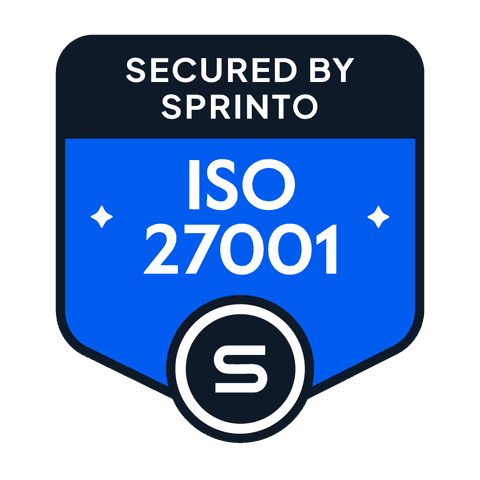Feb 26, 2024
·
Greg Taylor
The Corporate Sustainability Reporting Directive (CSRD) introduces a robust framework for sustainability reporting, central to which is the double materiality assessment. This process is critical for ensuring that companies not only comply with regulatory requirements but also align their sustainability initiatives with strategic business objectives.
Double materiality lies at the heart of the CSRD, and is reshaping how companies approach sustainability reporting. This concept is fundamental in ensuring that businesses not only meet regulatory mandates but also strategically align their sustainability efforts with their broader business goals.
But what exactly is 'double materiality' and why is it so crucial for CSRD compliance?
Double Materiality Explained
In the realm of sustainability, "materiality" refers to the significance of environmental, social, and governance (ESG) issues to an organization and its stakeholders. However, double materiality goes a step further by introducing two distinct dimensions:
Impact Materiality (Inside-Out View): This dimension prompts companies to consider their sustainability topics through the lens of how their operations impact people and the environment. It's about understanding both the positive contributions and the negative impacts a business has on the world around it.
Financial Materiality (Outside-In View): Here, the focus shifts to how ESG topics present financial risks and opportunities for the organization. This perspective assesses the potential effects of sustainability issues on the company’s financial health and performance.
The essence of double materiality is in recognizing that a company’s sustainability performance is not just about its direct financial implications but also about its broader impacts on society and the environment. By conducting a double materiality assessment, companies embark on a journey to identify the material impacts, risks, and opportunities (IROs) that must be disclosed in their sustainability statements.
Let's now explore each step of the double materiality assessment in even greater detail, culminating in the seamless integration of European Sustainability Reporting Standards (ESRS) metrics into corporate reporting practices.

Your context and value chain may be complex but it's critical you understand it
Step 1: Understanding Context and Value Chain
Approach: Initiate the process by mapping your company's value chain and identifying key stakeholders, including entities involved in both upstream and downstream activities. Assess who should be involved in the materiality assessment, leveraging any existing sustainability documents, climate risk, and human rights due diligence assessments to inform your approach.
Benefits: This foundational step ensures a tailored and informed materiality assessment, aligning the process with your company’s specific operations and impacts. It streamlines the identification of ESG topics and stakeholder engagement, building on existing knowledge to enhance efficiency and effectiveness in sustainability reporting.
Step 2: Propose Topics
Approach: Begin with an exhaustive list of potential ESG topics that could impact or be impacted by your company's operations. For this you can use the ESRS topic list as your starting point. Supplement this with insights from industry reports, sustainability frameworks, and competitor analysis to ensure a comprehensive scope.
Benefits: Starting with the ESRS topic list ensures that your approach is aligned with the latest regulatory expectations. This step ensures that no critical issues are overlooked, helping to identify emerging trends and risks early for proactive management. A broad scope, informed by a standardized framework like ESRS, enhances the credibility of your reporting and prepares you for future regulatory changes. It streamlines the process of identifying relevant topics, making it easier to focus efforts on areas of material significance to your company and its stakeholders.
Step 3: Engage Stakeholders
Approach: You can utilize various methods to engage with stakeholders to get feedback on your proposed topics. For example surveys, focus groups, and one-on-one interviews, covering a wide range of groups from different sectors and backgrounds are a great way to engage and gather the required information.
Benefits: Engaging with stakeholders provides diverse perspectives on material issues, strengthens relationships, and ensures your reporting is relevant to stakeholder concerns. This process can uncover innovative sustainability ideas and risk mitigation strategies, and enables you to finalize your list of ESG topics.
Step 4: Finalize Topics
Approach: Refine your list of ESG topics based on stakeholder feedback, prioritizing them by their significance to stakeholders and their impact on your business, in collaboration with key internal decision-makers.
Benefits: Finalizing topics with stakeholder input ensures your sustainability efforts are focused on areas of greatest importance and impact. It also allows for a clear focus on topics that are relevant to your organization in the ‘impacts, risks and opportunities (IRO)’ assessment.

Identifying your impacts, risks, and opportunities from mountains of data can be a challenge
Step 5: Identify your IROs
Approach: Conduct a detailed analysis for each prioritized topic to identify specific impacts, risks, and opportunities (IROs), analyzing internal data, industry benchmarks, and conducting value chain assessments. Insights from your stakeholder engagement activity is incorporated at this stage.
Benefits: Precisely identifying IROs allows for targeted sustainability strategies, effective risk mitigation, opportunity leverage, and highlights areas for innovation and competitive advantage.
Step 6: Score your IROs
Approach: Develop a consistent scoring system for each IRO based on severity and likelihood, using both qualitative and quantitative data. Consider where the IROs sit within your organization, for example are they upstream or downstream in your value chain, or do they sit at entity level.
Benefits: A systematic scoring process provides an objective basis for prioritizing issues, enhancing strategic decision-making, and resource allocation. It facilitates clear communication of decisions internally and externally.
Step 7: Assess your Results
Approach: Aggregate and analyze the scoring results and set thresholds for each to determine which IROs, and therefore topics, are material to you. These thresholds can be both qualitative and quantitative depending on the result. Once you have determined the materiality of topics, ensure you document the rationale for these decisions for inclusion in your sustainability report.
Benefits: This step offers a transparent overview of your materiality assessment process, aligning your company's sustainability efforts with stakeholder expectations and business priorities, enhancing stakeholder confidence.
Step 8: Integrate ESRS Disclosures
Approach: Align your identified material topics and IROs with the corresponding ESRS metrics and disclosures, considering the specifics of each standard and its relevance to your business. It’s recommended these are tracked with smart software to ensure security, scalability, collaboration and efficiency throughout the process.
Benefits: Integrating findings with ESRS metrics ensures compliance with CSRD requirements and enhances the comparability of your sustainability performance, supporting better investment decisions and improving access to capital.
Bringing it all together
By focusing on a detailed approach for each step of the double materiality assessment and highlighting the benefits, companies can navigate CSRD compliance more effectively and unlock strategic advantages.
This approach enhances stakeholder engagement, improves sustainability performance, and supports strategic business decision-making, turning compliance into a competitive edge.
More articles
Simplifying carbon accounting with the spend-based method
Jul 26, 2024
·
Daniel Lawson
Mastering the CSRD double materiality assessment: A comprehensive guide
Jul 15, 2024
·
Lena Bernkopf
3 tips for measuring your supply chain emissions
Jul 8, 2024
·
Daniel Lawson
4 steps to complete your EU Taxonomy reporting
Jun 28, 2024
·
Martina Bortot
The key links between CSRD and SFDR
Jun 21, 2024
·
Nadine Jager
Essential guide to the German Supply Chain Act (LkSG)
Jun 14, 2024
·
Michel Hampe
Understanding Scope 1, 2, and 3 emissions
Jun 6, 2024
·
Maddalena Castelli Dezza
The CSRD digital reporting requirements explained
May 31, 2024
·
Greg Taylor
ESRS 101: A guide to core CSRD metrics
May 22, 2024
·
Natasha Lambert
Carbon accounting under the CSRD: What you need to know
May 10, 2024
·
Philip Reuchlin
5 reasons to start your CSRD journey now
May 2, 2024
·
Bronagh Ward
Atlas Metrics and bunch forge partnership to support impact investing
Mar 6, 2024
·
Lauren Maupetit
The hidden costs of manual ESG reporting: A financial perspective
Feb 18, 2024
·
Greg Taylor
Navigating the CSRD: Your essential quick guide
Jan 22, 2024
·
Greg Taylor
From theory to practice - KfW Capital & Atlas Metrics join forces to support the EU sustainability transition
Nov 30, 2023
·
Lauren Maupetit
Dive into SFDR: Navigating the green finance wave
Nov 28, 2023
·
Greg Taylor
Atlas Metrics raises €5.2 million to help companies seamlessly collect ESG data — and create better compliant, more sustainable businesses
Mar 28, 2023
·
Lauren Maupetit


















